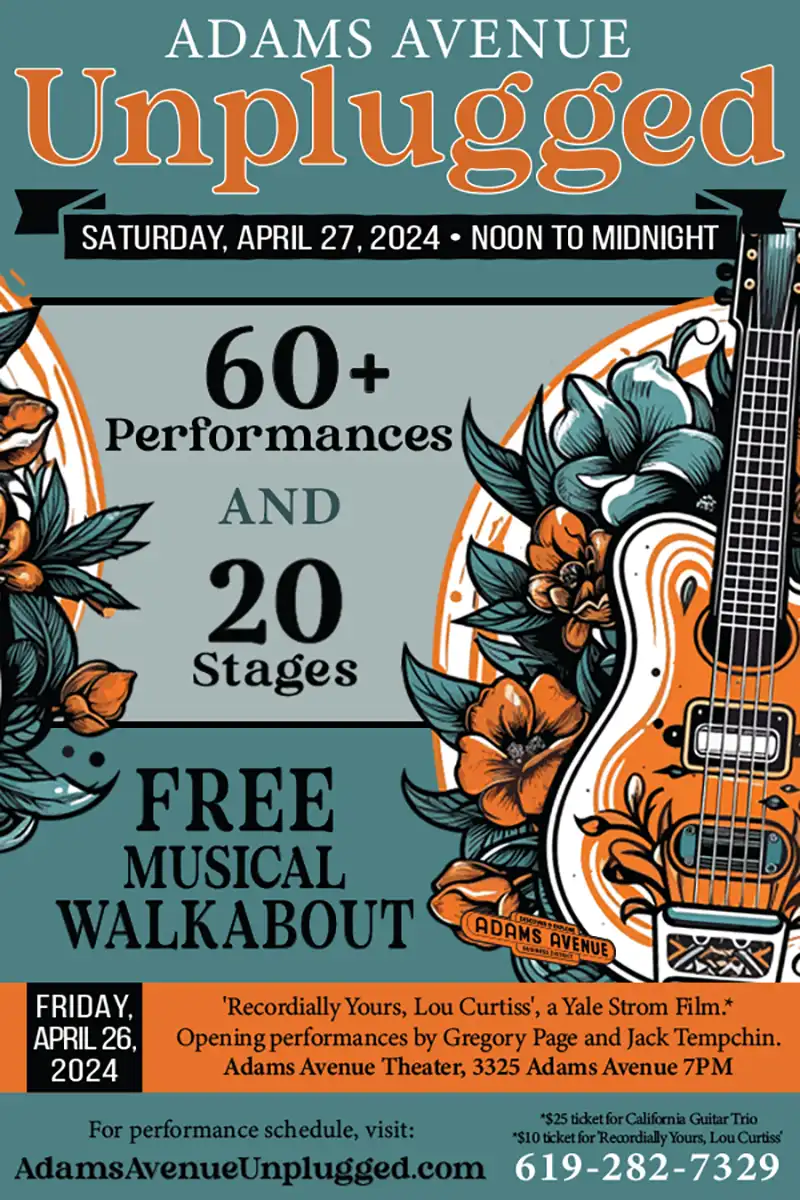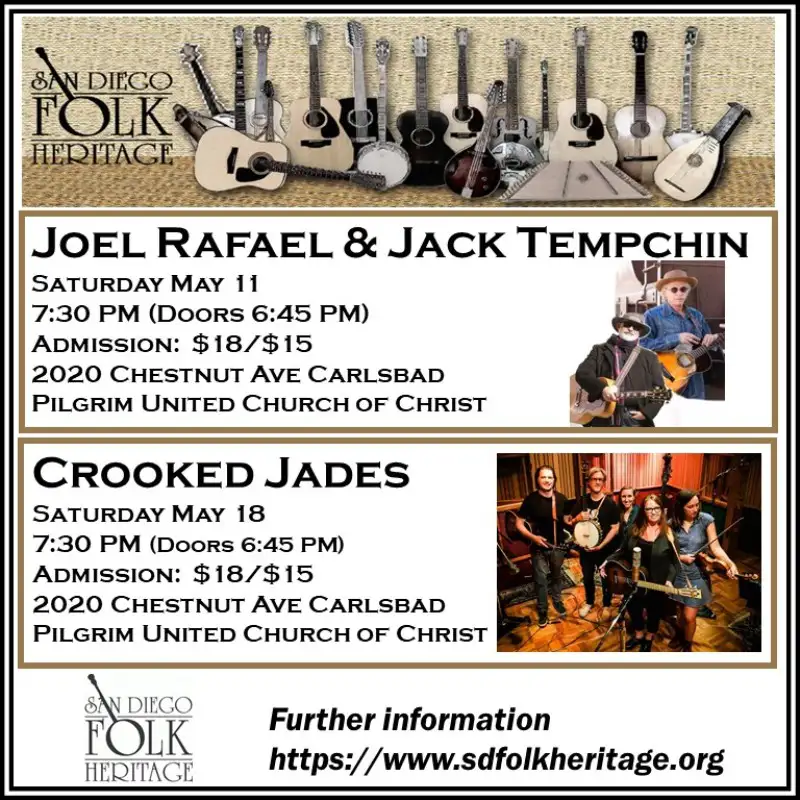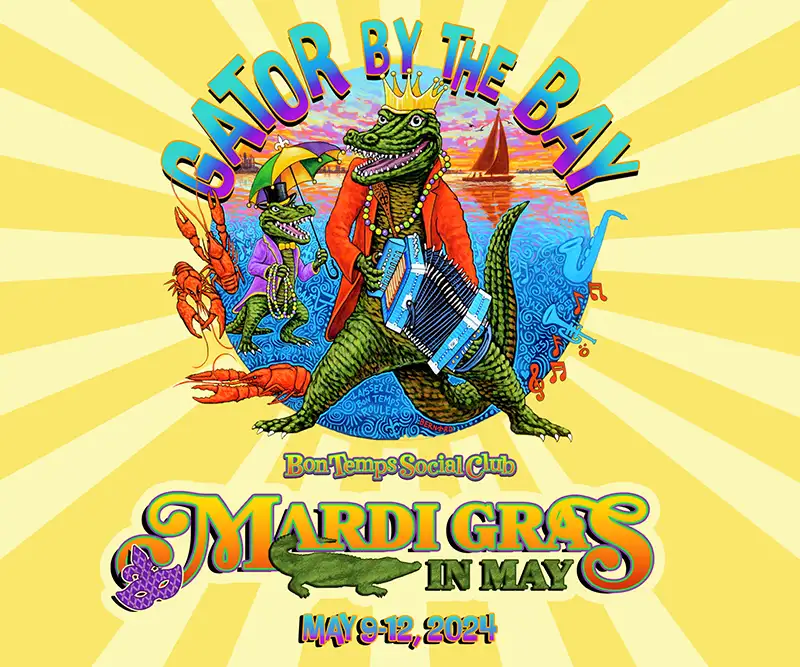Yesterday And Today
I’ll See You in My Dreams: Looking Back at the Concert for George
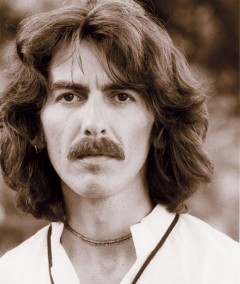
The late, great George Harrison, 1943-2001
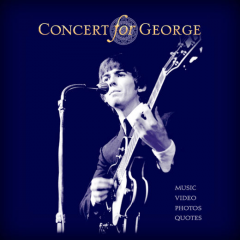
Concert for George program cover
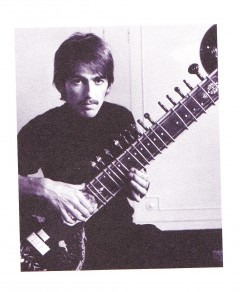
George with sitar
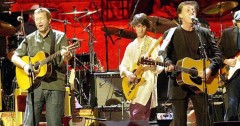
Eric Clapton, Dhani Harrison, and Paul McCartney perform at the Concert for George.
It was a typical, sepia-toned autumnal day on that particular Friday in London on November 29th, 2002, with the sky a grey mist across South Kensington. However, NO amount of precipitation could have possibly dampened my spirits as I stood in line to gain entrance into the Royal Albert Hall with several thousand other fortunate souls to witness one of the greatest evenings in music history and I am speaking of course about the Concert for George, the granddaddy of all musical tributes in honor of the late, great George Harrison.
This week marks the tenth anniversary of the concert (staged one year to the day of Harrison’s passing on 11.29.01) and in seasonal homage of practicing gratitude, it seems appropriate to offer some perspective on that historic night and share why I feel the Concert for George to be one of the grandest evenings that I have ever experienced. Grand in the sense that it remains a mind-blowing example of how much joy can be created when thousands of human beings come together in a room to beam Love at one another.
Not to make too large a point of it, but I perceive music to be a combination of both sacrament and church — in its fullest expression nothing short of Divinity and to walk into the Royal Albert Hall that evening… you want to talk about a room having energy? Jeez, I was completely sober and the walls were vibrating. My. Sweet. Lord. It was akin to an amnesiac stepping across a threshold and re-entering the spiritual home. It was certainly as profound an experience as reverberating with 60 Tibetan monks chanting in unison in a Himalayan monastery. In fact, change the locale to a Hindu temple, light a stick of Nag Champa, and it could have been the same vibe.
The traditional Hindu prayer of Sarve Shaam began the evening before Eric Clapton offered these words: “We are here to celebrate the life and music of George Harrison. This is a blessed occasion for me because I can share my love of George with you. And I think most important of it all is that his wife, Olivia, and his son, Dhani, can experience and witness how much we loved him through his music tonight.” Clapton then introduced Harrison’s musical and spiritual mentor, “the maestro” Ravi Shankar, who told the audience, “I strongly feel that George is here tonight. I mean, how can he not be here when all of us who love him so much have assembled all together to sing for him?”
With two dozen Indian musicians conducted by Annoushka Shankar, the music commenced at 8pm sharp, weaving an intoxicating spell of irregular rhythms and unfamiliar dialects with sitar, tabla, strings, and vocalists all snaking together in unison within the melody to create a deliriously serpentine sensation. This music is as exhilarating and exciting as any pile-driving rock ‘n’ roll on the planet and there isn’t a sneer or harsh word to be found. After seven minutes of amazing sitar work on Annoushka Shankar’s “Your Eyes,” Jeff Lynne took the stage to sing “The Inner Light,” the 1968 Beatles track that found Harrison setting the words of the Tao Te Ching to a traditional raga. The Indian section of the program concluded with a brand new 20-minute composition from Ravi Shankar titled “Arpan,” described by its composer as a “offering, gifting, giving, and dedicating — all combined in one word.” If I had to use one word to describe “Arpan” it would be “mesmerizing.” All of the musicians were wonderful but the solo that Eric Clapton took toward the end is breathtaking.
And while I’m on the subject of Eric Clapton allow me to add that his playing throughout this particular evening was nothing short of stunning. I must confess to having very little appreciation for 95% of what the man has chosen to release under his own name since 1971 and yet on the three unorthodox occasions I have managed to see him perform live (Bob Dylan’s 30th Anniversary Concert Celebration, his 2000 induction into the Rock and Roll Hall of Fame, and the Concert for George) he absolutely burned the stage with an intensity and purpose that I don’t usually get from his recordings. It is clear from the onset that his performance at this gathering was extremely personal and it shows in every frame of footage from the event.
After a 35-minute intermission the picture that is hanging over the center of the stage of “mature” George sporting a moustache (from the 1970s) was replaced with a picture of “Beatle” George from circa ’64 playing a Gretsch guitar, and as swiftly as you can possibly move from the sacred to the profane an announcement came over the PA proclaiming “Ladies and gentlemen, Monty Python’s Flying Circus!” and on marched Terry Jones, Terry Gilliam, Eric Idle, and Neil Innes dressed as French singing waiters for the wonderfully bawdy “Sit on My Face.” They concluded the number by taking a bow and revealing that none of them were wearing trousers under their aprons.
Which succinctly sums up the devilish dichotomy of George Harrison’s wry Liverpudlian nature quite well: devotionally reverent one minute, cocking a snoot at conventional morality the next. Who else would simultaneously donate thousands of pounds to promote spiritual organizations throughout the world and then start his own independent film production company (Handmade Films) in order to finance one of the biggest piss-takes on religion that’s ever been produced: Monty Python’s glorious satire on Christianity, Life of Brian?
Just as Gandhi famously stated, “my life is my example,” so it is with Harrison: the man walked his talk with countless examples of his generosity and exercised the belief that it is imperative to share your gifts with the world, a philosophy that is echoed in the evening’s program notes: “From my point of view, the material world is not necessarily just down to money or gain or wealth or power, but material in the sense of the physical…the physical world as opposed to a spiritual world. So the material world is where we live. We live subject to the laws of relativity; which is good and bad and up and down. I wrote a song called ‘Living In the Material World,’ and it was from that I decided to call the foundation the Material World Foundation. Most people would think of the material world as representing purely money and greed and take offense. But in my view it means a physical world. It’s the idea that if it is money and greed, then give the greedy money away in the material world.” It was in this spirit of giving that Harrison lived his life and that the entire night was conceived and the remainder of the evening strongly resembled the program that George created for 1971’s Concert for Bangladesh, a milestone in social consciousness for rock’s first major benefit concert.
As musical director Clapton exercised great editorial judgment in the song selections, diplomatically allowing for all the major players in George’s life to have a dignified segment in which to shine. Harrison’s most consistent collaborator from 1987 and beyond was ELO founder Jeff Lynne who turned in great performances of “I Want to Tell You” and “Give Me Love (Give Me Peace on Earth).” Procol Harum’s keyboardist Gary Brooker belted out a rollicking “Old Brown Shoe” and Clapton really nailed it on “Beware of Darkness,” with a soulful vocal and a guitar lead that is lyrical, sad, and beautiful all in the same instant.
At 9:35pm Joe Brown came on to do “Here Comes the Sun” and “That’s the Way It Goes,” followed by his daughter Sam and keyboardist Jools Holland for “Horse to Water.” If it felt at all like a lull there was a complete sea change when Tom Petty and the Heartbreakers take the stage and do a rocking three song set of “Taxman” (from Revolver), “I Need You (from Help!), and “Handle With Care,” the song that served to catalyze Petty, Lynne, Harrison, Bob Dylan, and Roy Orbison into the Traveling Wilburys.
At 10pm straight up the night took an intensifying shift with “Isn’t It a Pity” with Clapton sharing vocals with organist Billy Preston. At 10:08 Ringo Starr was introduced and the audience shrieked its approval. If there was anyone born to sit behind a drum kit it is Richard Starkey; the guy is definitely not front man material. But only a total cad would not be charmed by Ringo’s guileless manner as he sways to and fro to sing “Photograph” (a 1973 number one hit co-written with George) and the old Carl Perkins standard “Honey Don’t.”
When Clapton introduced Paul McCartney the place goes absolutely bonkers. Of course everyone in the building was a Beatles freak and now, for the first time since Harrison’s death, the two remaining Beatles were on stage together along with a dozen or so of the greatest musicians in the world, who also happened to be Harrison’s best pals. McCartney turns on the charm and performs at the height of his powers, delivering a lovely performance of “For You Blue” and sharing a duet with Eric Clapton on “Something,” arguably Harrison’s most beloved song.
This performance of “Something” never fails to bring tears to my eyes — I find it so emotionally pure and beautiful. The contrast between the busky manner that McCartney sang the first half of the song on ukulele and then — boom! — two snaps of the snare drum and Clapton was off into outer space accompanied by the London Metropolitan Orchestra (conducted by Michael Kamen in one of his last public appearances; less than a year later on 11.18.03 Kamen would suffer a fatal heart attack at 55).
Bassist Klaus Voormann joins in as McCartney continues to soar on “All Things Must Pass” and shares vocals with Clapton on a passionate reading of “While My Guitar Gently Weeps.” For “My Sweet Lord” and “Wah Wah” to REALLY come to life it required the trademarked over-the-top Phil Spector “Wall of Sound” with not one, or two, but three drummers (Ringo Starr, Jim Keltner, and Henry Spinetti) on stage with three more percussionists (including Ray Cooper and Jim Capaldi). Double horns, double electric bass, double keyboards, God knows how many guitars, two choirs, and an orchestra. It smacked of overkill but it was a HUGE adrenalin rush that couldn’t help but bowl you over and leave you emotionally drained.
Which is exactly how I felt after that rousing climax as Joe Brown sauntered on stage for the encore (with George’s favorite instrument, the ukulele) to croon the old jazz standard “I’ll See You in My Dreams.” It was as sweet a denouement as you could ask for, with all of the musicians gathered together at the back of the stage swaying in unison as thousands of red paper roses floated down from above. I never tire of this performance nor the memory of this time. It serves as a perennial reminder of how fleeting every moment is and just how dreamlike life can be. Namah Parvarti… and namaste.
A postscript…
So…how did I wind up in London on 11.29.02? When the universe wants you to be somewhere it conspires with all of its power to make it happen. Setting intentions, following through, being determined, and working your magic do count for something. There is also a ton of truth in the old adage that it’s not what you know so much as who you know. And HOW you choose to network with your associations. I am forever grateful to Mike Campbell for going out of his way to make my attendance at the Concert for George possible. In the spring of 2002 I met Mr. Campbell when he was being inducted with Tom Petty and the Heartbreakers into the Rock and Roll Hall of Fame at the Waldorf-Astoria in New York; I was working at the event as an consultant to the Hall during my time co-creating the archival music footage empire that is Reelin’ in the Years Productions. But that’s another story for another time…


